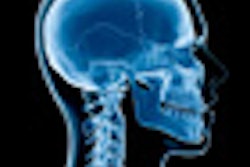Dentists may be the first healthcare providers to notice evidence of an eating disorder, such as anorexia nervosa, bulimia nervosa, binge eating disorder, and pica, according to an article in AGD Impact (October 2010, Vol. 38:10).
Dentists are in this position because the first signs of an eating disorder can manifest in the mouth. Sensitivity, tooth erosion, dry mouth, a high number of cavities, and enlarged salivary glands that cause swollen cheeks are signs that a patient may be suffering from an eating disorder, according to the AGD.
"The repeated, self-induced vomiting that occurs with many of these patients introduces corrosive stomach acid into the mouth that eats away at the enamel on teeth," said AGD spokesperson Claire Campbell, D.M.D., in a press release. "And brushing your teeth immediately after purging may amplify the damage because you are actually brushing acid onto more tooth surfaces, increasing the erosive action."
Another tip-off of an eating disorder is an abundance of cavities over a short period of time.
"Patients who binge on high-caloric, high-carbohydrate foods and then purge those foods run the greatest risk of decay," Dr. Campbell noted. "The sugars in those foods cause increased acidity in the mouth, while the purging bathes the teeth in even more acid, an incredibly destructive double whammy."
In extreme cases of eating disorders, the nerve of the tooth can be exposed, causing infection, discoloration, and even the death of the tooth. On rare occasions, tooth loss can occur. When the effects of an eating disorder are extreme, patients may require significant restorative care such as crowns or veneers.
Although certain populations whose careers are defined by image and weight -- including athletes, models, and actors and actresses -- are at an increased risk for developing an eating disorder, it is important for healthcare providers to remember that all ages and socioeconomic groups can be at risk for eating disorders, Dr. Campbell concluded.
Copyright © 2010 DrBicuspid.com



















